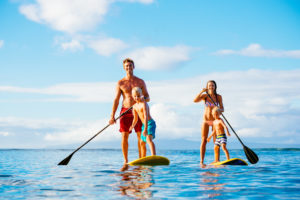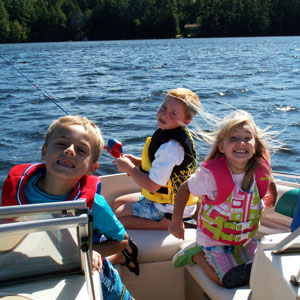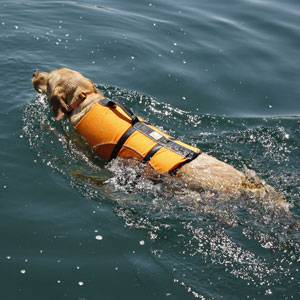News just in: the water’s great, join us! If you’re looking for a new activity or adventurous hobby, paddleboarding might be just the thing. Recently, the water sport has experienced a surge in popularity, and it’s easy to see why. Unlike surfing or sailing, paddleboarding can be done on almost any water surface: no waves or wind required. This makes it a much less weather-dependent activity than other water sports. Add to this that it can be done by anyone at any age or skill level, and you’ve got yourself the next big outdoors craze.
Since Southern California is where paddleboarding became popular, there are many great places to enjoy the sport. With everywhere from lakes and lagoons, to beaches and the open water, San Diego has many great locations for paddleboarding.
Table of Contents
Is paddleboarding hard? Is paddleboarding easy?:
Learning to paddleboard can be really easy or a challenge, depending on your existing skills. If you’re normally good at other balance-related activities, i.e. surfing, skateboarding, etc, then you should be able to pick up paddleboarding quickly and easily.
If you tend to struggle with your balance, don’t worry! Paddleboarding is simple and straightforward enough for everyone to learn and enjoy. Just have patience, and work in stages. You can master using a paddleboard sitting down or kneeling before you try standing up fully.
How to get on a paddleboard:
Getting on a paddleboard for the first time can be daunting. Below is a step-by-step technique you can practice and use to get standing. If you take it slowly and carefully, you’ll be upright and ready to set off in no time!
- Stand alongside the paddleboard in knee-deep water, making sure the fins don’t touch the bottom.
- Take hold of both sides of the board and climb on top.
- Maneuver into a kneeling position just behind the middle of the board.
- though While still holding onto the edges, and one at a time, put your feet where your knees were.
- To stand up from here, first raise your head and torso til you’re upright, then slowly stand up straight.
If it’s your very first time getting on a paddleboard, having someone to help steady the board at either end can give you more stability while moving around.
Even standing up on a paddleboard is the goal, you can still have plenty of fun sitting or kneeling on one! It can be a great way to get used to how to move, paddle, and what the board feels like as it moves in the water.
How to get back on a paddleboard after falling:
Falling in the water is an inevitable part of any water sport, and paddleboarding is no exception! Experienced paddleboarders fall off sometimes, but they get right back up again and keep going.
Getting back on the board might not be as easy when you’re in open water compared to at the water’s edge, but it’s not impossible. Follow these steps to easily get back into position.
- Swim to your board and tread water alongside.
- Grab the carry handle with one hand and pull yourself up until you can reach the other side.
- Holding on to both edges, kick hard to propel yourself back onto the board.
Once you’ve made it back onto the board, just stand up in the same way as when you got on, and no one will know you fell. If you’re nervous about the idea of falling in open water, try practicing falling on purpose in shallow water a few times. You’ll soon get the hang of how to get back up and you’ll be more confident out on the water.

Tips:
- When falling, try to angle yourself away from the board and flat against the water to prevent any injuries from the board or underwater objects.
- Keep hold of your paddle if you can. If not, get back onto the board and paddle with your hands to retrieve it.
- Using a leash for your board can prevent it from floating out of reach.
Conclusion:
Even though falling in the water isn’t the best feeling, the feeling of gliding along in the water makes up for it. With the fresh air, beautiful views, and the chance to unplug, we definitely think it’s worth a few spills in the water!
If you’re thinking of making paddleboarding a permanent hobby, you’ll definitely save money buying your own board instead of renting. There are many different kinds of paddleboards available, and inflatable ones are now becoming increasingly common. For an all-round board, they’re more durable, portable, and versatile than hardwood or fiberglass options. Check out our guide to the 5 Best Inflatable Paddleboards to find one to suit you!
Happy paddling!


